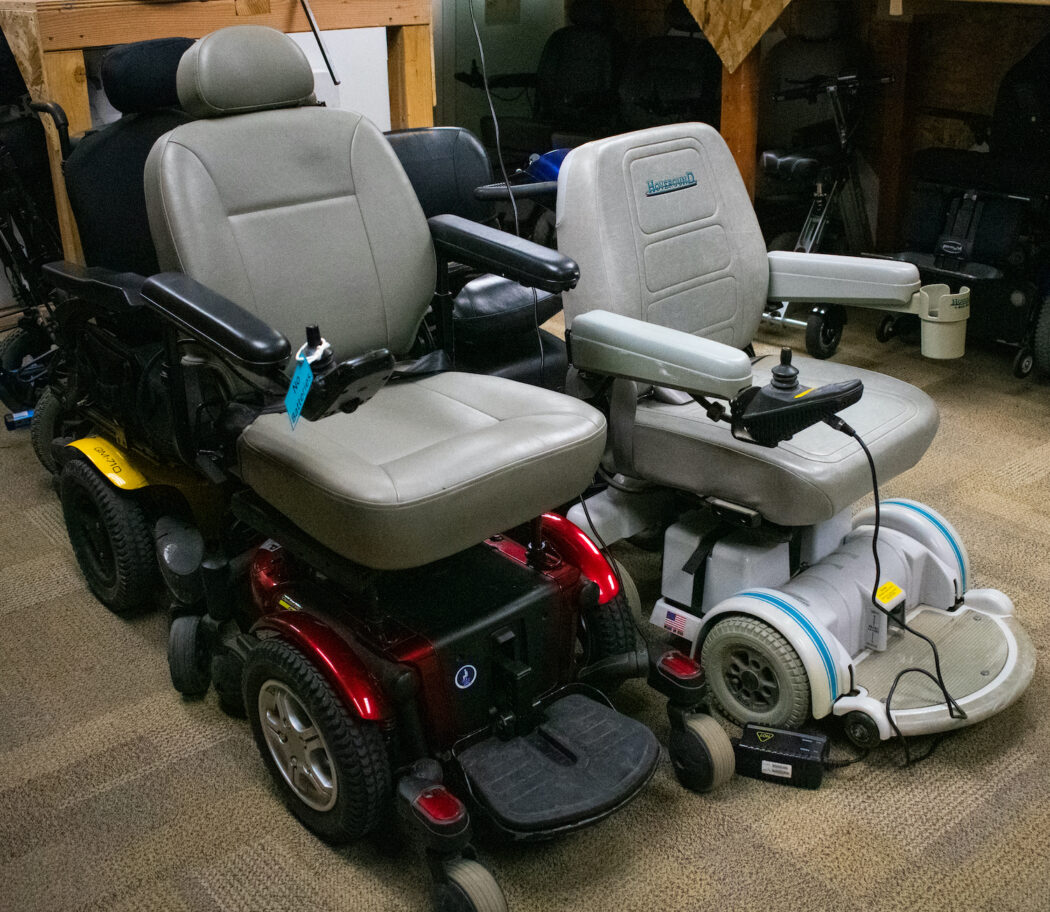Utah Assistive Technology Program continues to change lives
Shawnie Christensen grasped her green reacher — a tool with a claw that she uses to grab objects. After maneuvering her elbow into a comfortable position, she smiled. Christensen — just 24 years old — stared at a stack of plastic red cups; she was going to complete a mission with this grabber.
Her manicured nails pressed the buttons on the reacher. When she touched the button on the left, the claw opened, and when she pressed the button on the right, the claw closed. With this electrical tool, she grabbed a red cup from the stack and set it down on a chair.
She grinned broadly, her eyes bright. Until now, she’s only had access to a reacher that required her to clench her fists whenever she wanted to grab an object.
Muscular dystrophy prevented her from clenching her fists, creating a challenge that would render using a reacher almost impossible — until the Utah Assistive Technology Program, or UATP, stepped in.
“I used to pick up (objects) with a hanger, but I wanted something easier,” Christensen said, dictating her thoughts through her Android tablet’s speaking service.
Dan O’Crowley, a USU undergraduate student and UATP coordinator, explained the process of changing existing equipment to match others’ needs.
“First step when someone comes in with a creative idea is we say, ‘Does this already exist?’ And so, the first thing we do is we find if it already exists — and like 95% of the time, it does, and that’s fine, that’s great,” O’Crowley said. “If nothing exists, then that’s where we use the rest of the shop to either modify something that does exist, kind of tweak it to make it work for them, or we’re just building from scratch.”
And it’s not just the modified, electronic grabber that has helped a Logan resident. It’s the dozens of other engineered projects that assist all kinds of disabilities.
Kenner Mecham, a USU student and UATP employee, said, “I’ve worked with everybody from people with deaf blindness to children with autism, so helping people is just kind of what I like to do.”
UATP has created several tools that will help individuals through their day-to-day lives, with everything from liftware eating utensils, vehicle adaptions and voice-activated electronic assistant programs.
In one project, O’Crowley designed a pill bottle cap that had a small hole in the lid, thus helping a woman with tremors simply shake the bottle to get her pill rather than struggling to open the child-proof safety cap.
Currently, O’Crowley is working on an electrical exoskeleton — a mechanical engineering capstone that won’t just provide learning experiences, but could possibly change the future of mobility.
“Exoskeletons show a lot of promise for dealing with many of the health issues of wheelchairs. They also show a lot of promise as far as access in the community that goes with being able to reach up high, step over curbs, and step into vehicles,” O’Crowley said in a UATP press release.
O’Crowley noted that while exoskeletons have several benefits, insurance companies may not completely cover them because they’re treated as a secondary device, not a primary device, such as a power wheelchair.
According to O’Crowley, exoskeletons could become the new device that individuals will use as their primary device — with a few modifications.
Currently, O’Crowley is working on using motors to help propel the device forward, which could help the individual walk. He also wants to add seats to the standing device, which will help the person get to a sitting position.
In addition to making new equipment, the program has everything from mobile walkers to knee scooters to power wheelchairs, according to Mecham.
And one of the best parts: equipment can be loaned for free, or bought with a reduced price.
“Power wheelchairs are thousands of dollars brand new — we sell them for $250,” Mecham said.
The equipment prices are also meant to exist for those without insurance, according to O’Crowley.
“That’s what we’re doing with the whole used equipment area of just trying to create a cheaper alternative, and in some ways, a quick alternative to meet the emergencies of life,” O’Crowley said.
-Jenny.Carpenter@usu.edu
Featured photo by Elise Gottling

